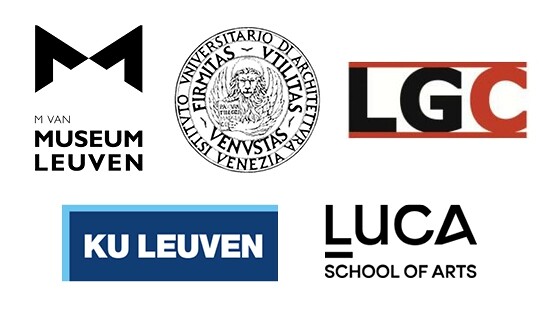November 8–10, 2017, 2pm
November 8, 2–8pm: IUAV, University of Venice, Aula Tafuri, Italy
November 10, 2–8pm: M-Museum Leuven, Forum, Belgium
Dirk Braeckman’s (b. 1958) black-and-white photographs bring a sense of stillness against the backdrop of today’s cascade of images and information. Working with analog photography, in the 1990s Braeckman found a visual language that reflects on the act of viewing and the status of the image. The artist since then has been exploring the boundaries of his medium. He has challenged photographic conventions by rephotographing existing photographs or adding dust, hair and other elements to the image during the development process. The camera’s flash reflects off the surface of the subject, the texture of walls, curtains, carpets and posters. Today, Braeckman states that analog photography “continues to challenge [him], and [that he] can still see endless possibilities in it.” Simultaneously, since the late 1990s his work has been affected by the rise and the possibilities of digital media. The shift towards the digital image definitely changed the relationship between the photograph and the space in which a picture is shown. In some of Braeckman’s works, as well as in the work of many contemporary photographers, this evolution is apparent from the transition it has made away from a predominantly pictorial experience to more spatial forms of perception, in which photography allies itself rather to architecture and sculpture than to painting.
Taking the solo exhibition of Dirk Braeckman at the Belgian Pavilion of the 2017 Venice Biennale as a point of departure, next to the observation that photography more than ever before interacts with the space in which it is shown, this two-day symposium focuses on the broader relation between photography and the concepts of space, place and spatiality. Whereas space is often defined by an abstract scientific, mathematical, or measurable conception, place rather refers to the elaborated cultural meanings people invest in or attach to a specific site or locale.
During the symposium artists, curators, and academics from different fields will examine the following key questions: How does the photographic image impact the perception and experience of the exhibition space and vice versa? Does this imply reconsidering our conventional understanding of the notion of “place”? How can we define photography’s new spatial possibilities in the digital age? Moreover, how is photography’s two-dimensional identity affected by the three-dimensional physical space on the one hand, and the virtual space on the other? Does this shifting photographic “spatiality” influence our conception of time or the temporality of our perception? In what way does the perception of a photographic image differ from the experience of a ‘real’ space/place? Does the photographic image constitute a space/place of its own? If so, can such a photographic space/place be called a reality? When the perception of a photograph does indeed affect the experience of the gallery space, what is the role of the body in this process? What is the status of images that do not represent outside reality but the insides of our bodies, such as X-rays? Are these images models or representations? What is the difference between both?
Symposium committee: Geert Bouckaert, Liesbeth Decan, Jana J. Haeckel, Nicola Setari, Hilde Van Gelder, Angela Vettese and Eva Wittocx
Speakers include: Cristina Baldacci (ICI Berlin), Dirk Braeckman (artist), Peter Geimer (Freie Universität Berlin), Virginia Heckert (The Getty), Steven Jacobs (Ghent University – University of Antwerp), Frederik Maes (KU Leuven), Antoni Muntadas (IUAV University of Venice), Bas Princen (artist), Clarissa Ricci (IUAV University of Venice), Olga Smith (University of Warwick), Ernst van Alphen (Leiden University), Els Vanden Meersch (artist), Hubertus von Amelunxen (The European Graduate School), Helen Westgeest (Leiden University)
Organized by M-Museum Leuven, KU Leuven, LUCA School of Arts, Lieven Gevaert Centre and IUAV University of Venice
Concept: Liesbeth Decan & Nicola Setari


